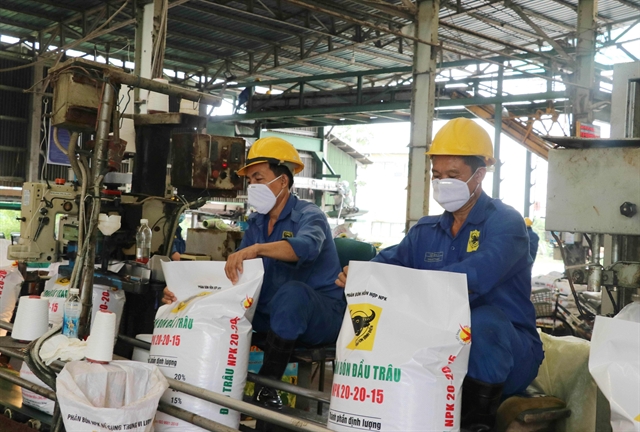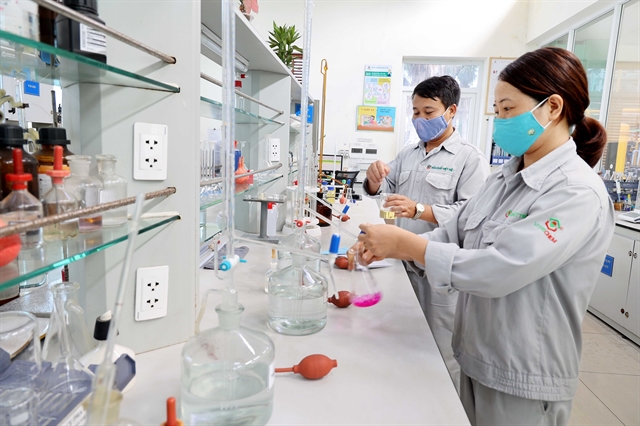 Economy
Economy

 |
| Phùng Hà, Chairman of the Vietnam Fertiliser Association and former Director of the Department of Chemicals under the Ministry of Industry and Trade. — VNA/VNS Photo |
A draft revision of the Law on Chemicals 2007 is currently open for public feedback. The amendment aims to align Việt Nam’s legal framework with global trends in green, circular and sustainable economic development while enhancing emission reduction efforts.
Chairman of the Vietnam Fertiliser Association and former Director of the Department of Chemicals under the Ministry of Industry and Trade, Phùng Hà, discusses key updates in the proposed amendment with a Vietnam News Agency reporter.
The Law on Chemicals 2007 has been in effect for years. Why is a revision necessary now?
Although the Law on Chemicals 2007 has worked well after 17 years, it shows gaps, especially in keeping up with green, circular and sustainable development trends, as well as in achieving Việt Nam’s 2050 Net Zero goal.
For example, the law lacks clear rules on its scope and coverage for some chemical-related activities. It also does not provide guidelines for green chemistry and sustainable industry practices.
The law also fails to emphasise the critical role of the chemical industry, which supports many economic sectors, especially industrial production. Due to environmental and health concerns, some localities limit chemical investments, making new projects harder to develop.
Additionally, the law mainly regulates the production, trade and import of chemicals but does not fully cover their entire life cycle, including disposal. It also lacks rules for managing hazardous dual-use chemicals, new drug precursors and consumer products like paints, inks, adhesives, detergents, cosmetics and toys that contain hazardous substances.
Updating the 2007 Chemical Law is crucial to fixing these issues and creating a legal framework that supports the industry's sustainable growth.
What are the key updates in the 2025 revised law?
The draft revision of the Law on Chemicals addresses the shortcomings of the 2007 version. Notably, it combines both chemical industry development and chemical safety management – something rarely seen in chemical laws of developed countries.
Additionally, the new draft aligns with global trends in green and circular economies, greenhouse gas reduction, and Việt Nam’s net zero commitment. It introduces regulations on green chemistry in technology design, selection and operations.
The draft also includes provisions for managing hazardous chemicals in products, which are in line with international chemical management practices.
Moreover, it expands regulations beyond production, transportation, storage and disposal to include chemical destruction, ensuring a more comprehensive legal framework.
 |
| Việt Trì Chemical Joint Stock Company engineers work in the laboratory. The draft law offers incentives to develop the chemical industry into a modern, key sector. — VNA/VNS Photo Trung Kiên |
Besides the key updates in the 2025 draft revision, do you have any suggestions for further improvements?
First, the draft law offers incentives to develop the chemical industry into a modern, key sector. However, it should clarify its alignment with the Investment Law and other related laws to ensure effective implementation.
Additionally, Article 7 needs adjustments in terminology. Instead of prioritising high-nutrient fertilisers, the focus should be on Enhanced Efficiency Fertilisers (EEF). High-nutrient fertilisers can be wasteful and contribute to environmental pollution if plants cannot fully absorb them. In contrast, EEF products are more efficient for crops, reduce losses and lower greenhouse gas emissions.
For the regulations on chemicals requiring special control, the responsibility for defining these substances should be assigned to the Government rather than being directly legislated in the law. This would allow for more flexibility in adapting to emerging risks.
For example, defining pharmaceutical chemicals in the law is essential to distinguish which substances qualify for incentives. Globally, pharmaceutical chemicals fall between chemistry and pharmaceuticals, combining elements of organic chemistry, biochemistry and biotechnology.
Along with these revisions, clear definitions are important in the law, especially for terms like new chemicals, pharmaceutical chemicals, hazardous chemicals and petrochemical products.
For example, defining pharmaceutical chemicals helps clarify which substances get incentives. Globally, these chemicals blend chemistry and pharmaceuticals, including organic chemistry, biochemistry and biotechnology.
Another point of clarification is whether food additives, food processing aids, flavouring agents, vitamin and mineral processing aids are classified as chemicals under the law. The draft should include clear exemptions to prevent regulatory overlap with other laws.
Regarding green chemistry principles, the current draft states that: "Green chemistry principles apply to the design, selection of technology, equipment, production processes, use, and disposal of chemicals to minimise or eliminate hazardous substances."
However, this is too broad and difficult to enforce. The law should adopt a more structured approach, such as Paul Anastas and John Warner’s 12 Principles of Green Chemistry, which include prevention, cost efficiency, safer synthesis methods, safer chemicals, safer solvents and additives, energy-efficient design, use of renewable materials, fewer by-products, catalysts, biodegradable products, real-time analysis to prevent pollution and safer chemistry to reduce risks.
Additionally, for chemical transportation, the drafting committee should ensure that Article 14 of the revised Chemical Law aligns with Decree No. 161/2024/NĐ-CP, issued on December 18, 2024. This decree outlines the list of hazardous goods, transportation regulations and procedures for licensing and certification of drivers and escorts handling dangerous goods on roads. — VNS




